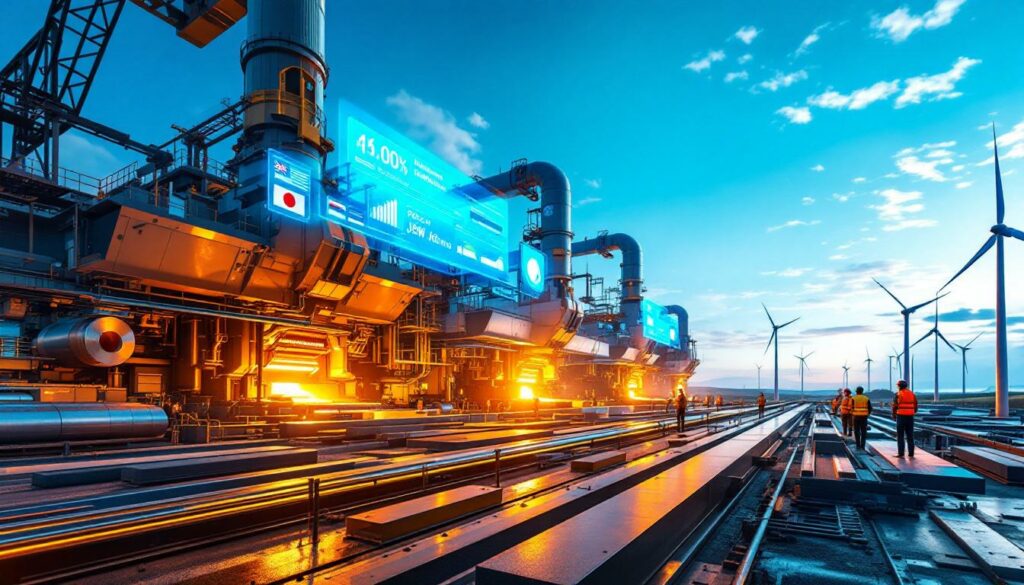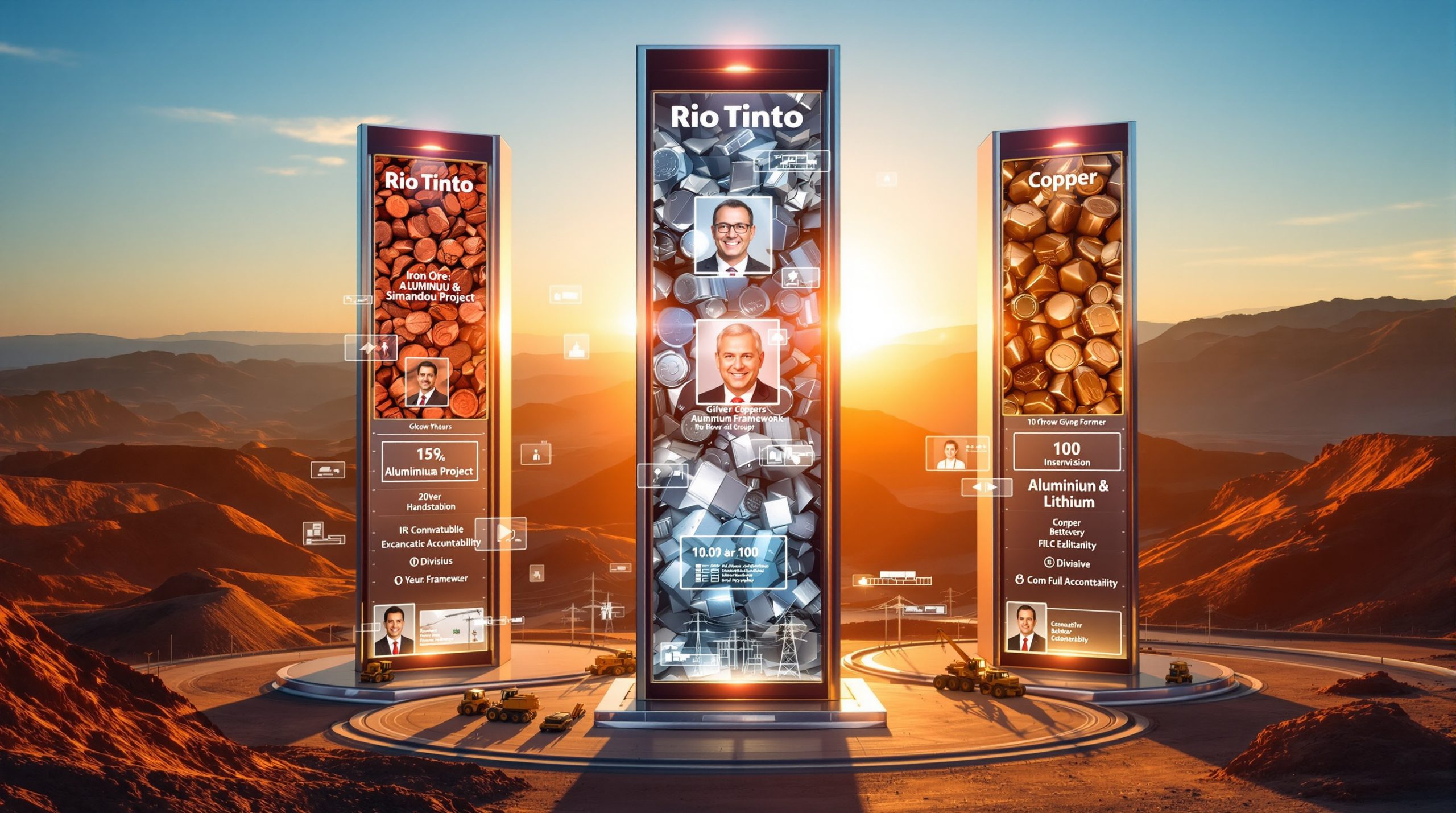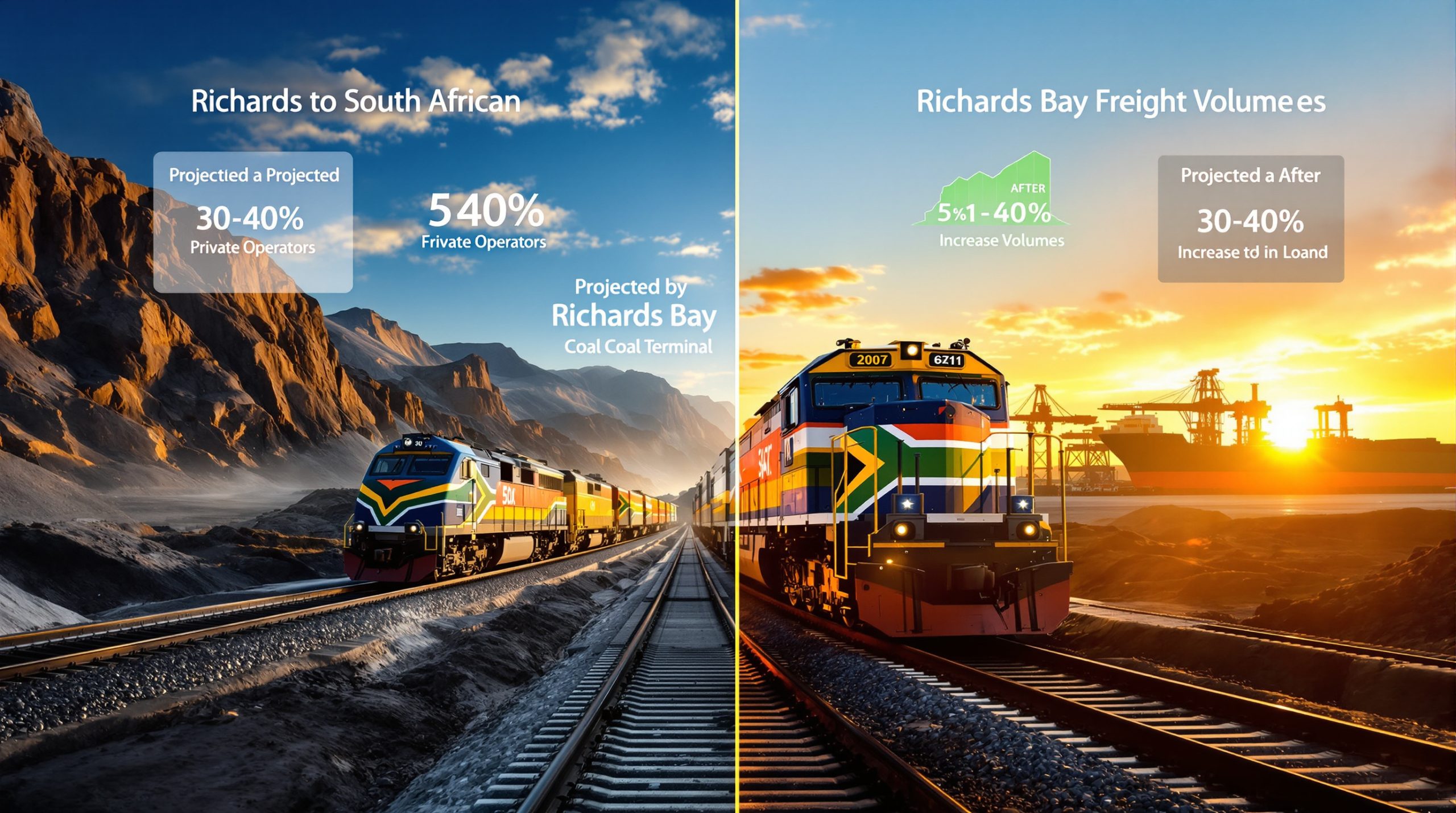BlueScope Leads International Consortium in Whyalla Steelworks Bid
BlueScope Steel has confirmed its leadership role in a powerful international consortium bidding for the Whyalla steelworks, establishing itself as a frontrunner in the acquisition race. The consortium brings together four major global steel producers with significant industrial capabilities and financial resources, marking a potential turning point for Australia's steel industry.
The group, which includes Japan's Nippon Steel, India's JSW Steel, and South Korea's POSCO alongside BlueScope, boasts a combined market capitalization of approximately $115 billion. This industrial powerhouse formally submitted a non-binding expression of interest to the Australian Stock Exchange on Monday, following the closure of the expression of interest phase last week.
Key Consortium Members and Their Global Standing
The consortium represents some of the most significant players in global steel production:
- BlueScope Steel (Australia): Leading Australian steel producer serving as the consortium leader
- Nippon Steel (Japan): Ranked 4th globally in steel production for 2024 according to the World Steel Association
- POSCO (South Korea): Ranked 8th globally in steel production for 2024
- JSW Steel (India): Ranked 12th globally in steel production for 2024
This strategic alliance brings together extraordinary technical expertise, industrial capability, and financial resources, with three members ranking among the world's top 15 steel producers. Their combined experience spans multiple continents and diverse market conditions, potentially providing a robust foundation for revitalizing the Whyalla operations.
Why is the Consortium Interested in Whyalla Steelworks?
The BlueScope-led consortium has identified strategic potential in the Whyalla facility that extends beyond its current operations. According to BlueScope's official statement to the ASX, they view the steelworks as a key site for future green iron production in Australia.
The consortium specifically highlighted three core strategic interests in the facility:
- A promising location for producing lower-emissions iron in Australia
- Potential to supply both domestic markets and export opportunities
- An opportunity to contribute meaningfully to global steel industry consolidation trends
In their statement, BlueScope noted that the facility has "the potential to play an important role in the decarbonisation in mining industry"—signaling their long-term vision extends beyond merely maintaining current operations.
Next Steps for the Consortium
If invited to proceed to the next phase of the sale process, the consortium has outlined several key actions:
- Conducting joint due diligence on the Whyalla facility and operations
- Engaging with South Australian and Federal governments regarding the announced funding support packages
- Evaluating the long-term sustainability of steel industry operations in the region
- Assessing potential technological pathways for decarbonization
BlueScope has emphasized that any acquisition offer would be contingent on thorough due diligence and careful consideration of potential returns on investment for all consortium members. This cautious approach suggests the group is focused on creating a viable long-term future for the facility rather than a quick acquisition.
What is the Current Status of the Whyalla Steelworks?
Administration and Government Support
The Whyalla steelworks has been under administration since February 2025, when the South Australian government intervened to remove ownership from British industrialist Sanjeev Gupta's GFG Alliance. Since that intervention, operations have been managed by administrators KordaMentha, who have been receiving operational advice from BlueScope Steel to maintain production during this transition period.
To ensure the facility's continued operation through this challenging period, significant government funding has been allocated:
- $659 million from state and federal governments to maintain operations during administration
- An additional $1.9 billion package available to the future owner specifically targeted at supporting decarbonization efforts and transitioning to green iron and steel production
This substantial public investment underscores the strategic importance placed on maintaining this industrial asset and its critical role in both regional employment and national industrial capability.
Timeline and Interested Parties
According to Energy and Mining Minister Tom Koutsantonis, more than 15 national and international parties have progressed beyond the final expression of interest stage for the steelworks. This robust level of interest suggests widespread recognition of the facility's potential value, particularly with the significant government support package available.
The government has consistently maintained a measured timeline for the sales process, with Minister Koutsantonis indicating that a final sale is not expected until the second half of 2026. This extended timeframe allows for thorough due diligence and careful consideration of the complex technical and financial factors involved.
Reflecting on the quality of interested parties, Minister Koutsantonis expressed cautious optimism:
"If you had told the premier and I in February that the consortium would be made up of companies like POSCO, Nippon, BlueScope—we would have been overwhelmed."
He added: "It's not time to pop the champagne corks just yet. But we are on the right track, and we are meeting the milestones we hoped to meet."
How Does This Fit Into Australia's Industrial Strategy?
Decarbonization and Future Steel Production
The interest from the BlueScope-led consortium aligns closely with Australia's broader industrial strategy to maintain domestic manufacturing capability while transitioning toward lower-emission production methods. The $1.9 billion government support package specifically targets three interconnected objectives:
- Decarbonization of the Whyalla facility's existing operations
- Transition to green iron production using emerging technologies
- Development of green steelmaking capabilities for the future
This represents a significant industrial policy commitment that recognizes both the challenges and opportunities presented by climate change. Rather than allowing the facility to close or continue with carbon-intensive processes, the strategy aims to position Australia as a leader in next-generation steel production.
Regional Economic Significance
The Whyalla steelworks is far more than just an industrial facility—it's a cornerstone of South Australia's Spencer Gulf region economy. With direct employment of more than 1,000 workers, the facility creates substantial economic activity through both direct jobs and the broader supply chain.
The South Australian government's decisive intervention in February 2025 demonstrated the strategic importance placed on maintaining this industrial asset, with significant public funds committed to ensuring its viability during the administration period.
Minister Koutsantonis emphasized this perspective, noting that seeing "consortiums like this put their hands up—the prestige behind it, the expertise, the deep pockets, the long-term thinking—is really encouraging" for the region's future.
What Other Industrial Challenges Exist in the Region?
Port Pirie Smelter Concerns
While progress appears positive for Whyalla, another major industrial employer in the Spencer Gulf region faces significant challenges. The Port Pirie lead smelter, which employs approximately 900 people, is reportedly experiencing severe financial difficulties according to owner Nyrstar Australia.
The company has stated the facility is losing "tens of millions of dollars a month" and has been actively lobbying for government assistance to protect its smelting operations in both Port Pirie and Hobart. Nyrstar has attributed these challenges to market distortion from Chinese operations, which they claim has made their operations economically unsustainable without support.
Potential Economic Impact
The potential closure of the Port Pirie smelter presents serious concerns for the regional economy. A report released by The McKell Institute, a progressive think tank, provided sobering projections of the potential impact:
- The city could lose approximately 2,000 residents
- This represents more than 11% of Port Pirie's current population of nearly 14,000
- The economic ripple effects would extend throughout the regional supply chain
Port Pirie Mayor Leon Stephens expressed the community's anxiety about the situation, noting: "You really want these things to go ahead as quick as possible so that the community doesn't get more deflated."
The McKell Institute report recommended several potential interventions, including:
- Federal government consideration of equity stakes in struggling refineries
- Measures to boost local demand for critical minerals
- Development of a comprehensive national strategy for metals processing
What Government Response is Expected for Port Pirie?
The South Australian cabinet's scheduled trip to Port Pirie for a community meeting on Monday night generated expectations of a potential support package announcement. This high-level governmental engagement signals the seriousness with which authorities are viewing the situation.
Premier Peter Malinauskas indicated on Monday that a funding deal was "hopefully very close," though technical details were still being finalized. He emphasized that any government investment would be conditional on securing the smelter's long-term future and protecting local jobs, not simply providing a short-term bailout.
The Premier outlined his approach with clarity:
"We've been clear with [Nyrstar's parent company] Trafigura that the only circumstances under which the South Australian government is going to invest any support in Nyrstar is if it's about setting it up for an even better and commercial future. We accept, and it's undeniable, that Nyrstar is facing challenges not of its own making."
This statement suggests a strategic approach to intervention that focuses on creating sustainable operations rather than temporary support. The Premier's acknowledgment that the challenges are "not of its own making" indicates recognition of the broader global market forces affecting the industry.
What are the Broader Implications for Australia's Manufacturing Sector?
National Strategy Considerations
The parallel challenges facing both Whyalla and Port Pirie highlight broader structural issues for Australia's manufacturing and resource processing sectors. These situations represent a national pattern rather than isolated incidents, raising questions about how Australia should position its industrial evolution trends.
McKell Institute CEO Ed Cavanough articulated this concern directly:
"We can't have a situation where every six months there's a new smelting operation that comes under threat and there's sort of a bespoke package each time. What we want to see is a cohesive, national coordinated strategy for the entire sector."
This perspective suggests that the individual challenges at Whyalla and Port Pirie may represent systemic issues requiring more comprehensive policy responses beyond case-by-case interventions. The absence of such a coordinated approach risks creating ongoing uncertainty for both investors and communities.
Industrial Sovereignty and Critical Minerals
The significant government interventions at both facilities reflect growing concerns about maintaining domestic industrial capability, particularly in sectors related to critical minerals and materials. This represents a notable shift in industrial policy thinking, moving from market-led approaches toward more active state involvement in securing strategic industrial assets.
Several factors appear to be driving this shift:
- Growing recognition of supply chain vulnerabilities exposed during recent global disruptions
- Increasing awareness of the strategic importance of critical minerals processing capability
- Emerging opportunities in green steel and other lower-emission industrial processes
- Concerns about maintaining technical capability and skilled workforces
The substantial public funds committed to these operations indicate this policy shift has significant bipartisan support at both state and federal levels.
What's Next in the Whyalla Sale Process?
With the expression of interest phase now closed, the Whyalla steelworks sale process enters a new phase of evaluation and due diligence. Based on government statements and standard acquisition processes, the next steps will likely include:
- Selection of preferred bidders to progress to the detailed due diligence phase
- Thorough financial, operational, and technical assessment by shortlisted parties
- Detailed negotiations with government regarding support packages and conditions
- Development and submission of binding offers
- Final selection of a new owner and regulatory approvals
Based on government statements, this comprehensive process is expected to continue through 2025 and into 2026, with a final sale anticipated in the second half of 2026. This extended timeline reflects the complexity of the transaction and the importance of securing the right long-term solution.
FAQs About the Whyalla Steelworks Situation
How long has the Whyalla steelworks been in administration?
The Whyalla steelworks has been in administration since February 2025, when the South Australian government intervened to remove ownership from GFG Alliance.
How much government funding has been committed to the steelworks?
The state and federal governments have allocated $659 million to maintain operations during administration, plus an additional $1.9 billion package for the future owner to support decarbonization efforts.
When is a sale of the Whyalla steelworks expected to be completed?
According to government statements, a sale is not expected to be finalized until the second half of 2026.
How many jobs are directly connected to the Whyalla steelworks?
The Whyalla steelworks directly employs more than 1,000 people and is a significant contributor to the regional economy.
What is the focus of the proposed future development at Whyalla?
The consortium and government funding are focused on transitioning the facility toward lower-emissions iron production and green steelmaking, positioning it for a more sustainable future in a carbon-constrained global economy with potential iron ore market impact.
Disclaimer: This article contains analysis of potential future industrial developments which naturally involve uncertainties. While all information is based on current statements from government officials and company announcements, actual outcomes may differ from projections. Readers should not interpret this information as financial advice regarding investments in the companies mentioned.
Want to Spot the Next Major ASX Discovery Before the Market?
Discovery Alert's proprietary Discovery IQ model instantly notifies investors of significant mineral discoveries on the ASX, providing actionable insights before wider market recognition. Explore why major discoveries can generate substantial returns by visiting the dedicated discoveries page and position yourself ahead of the market.




